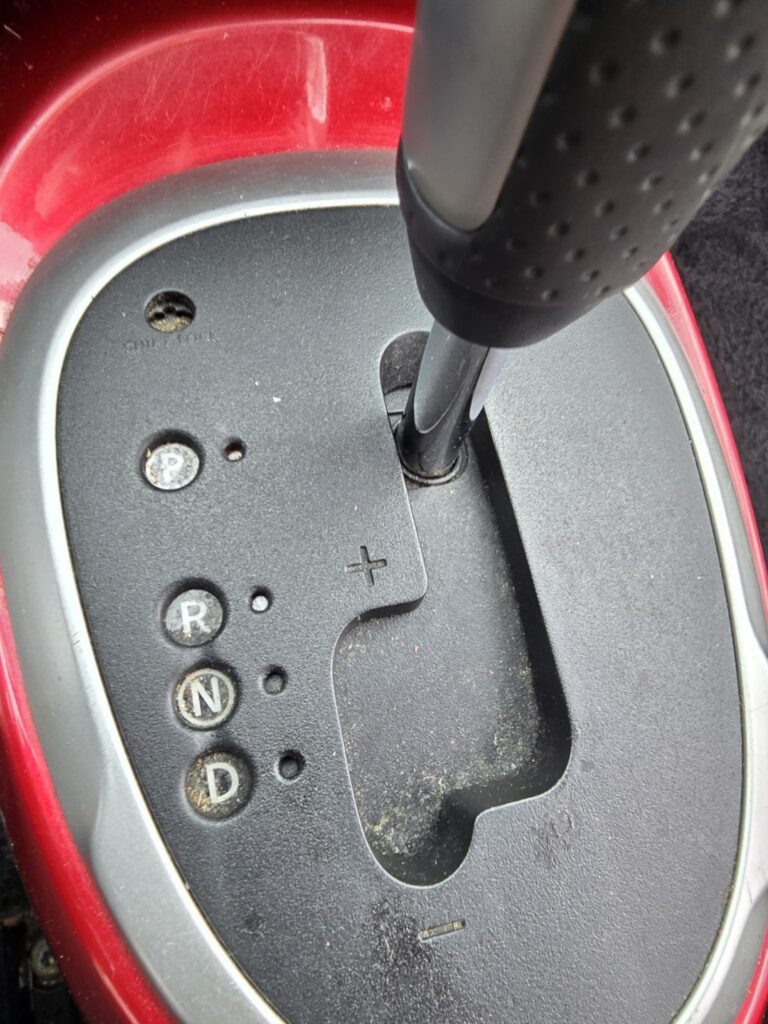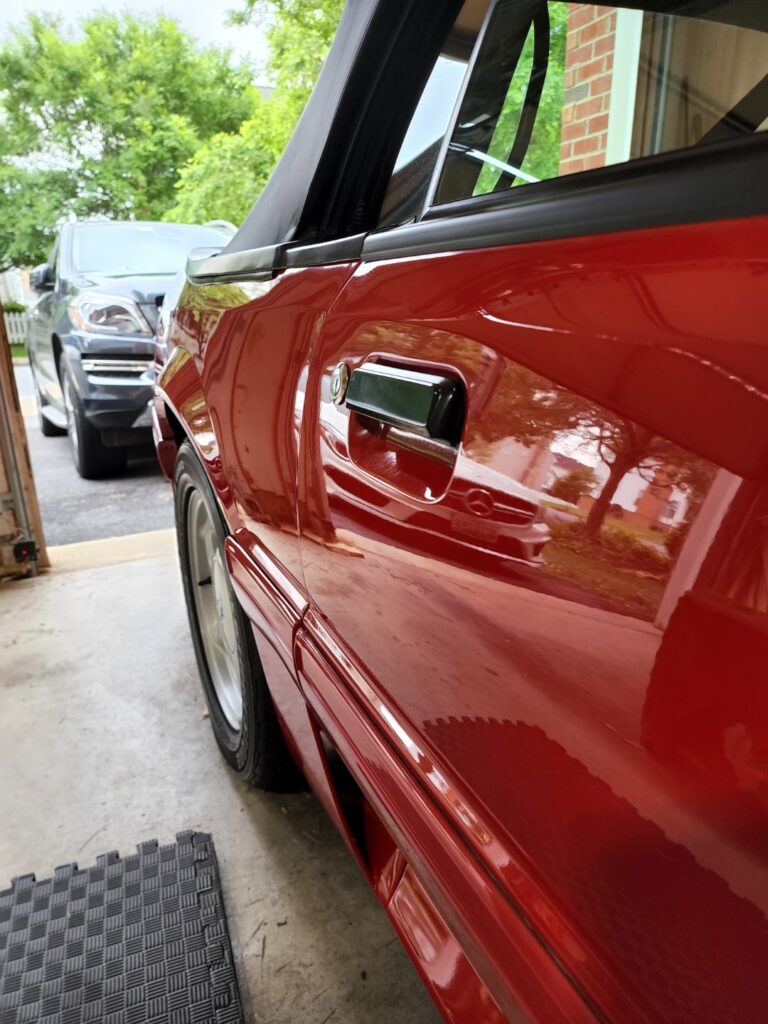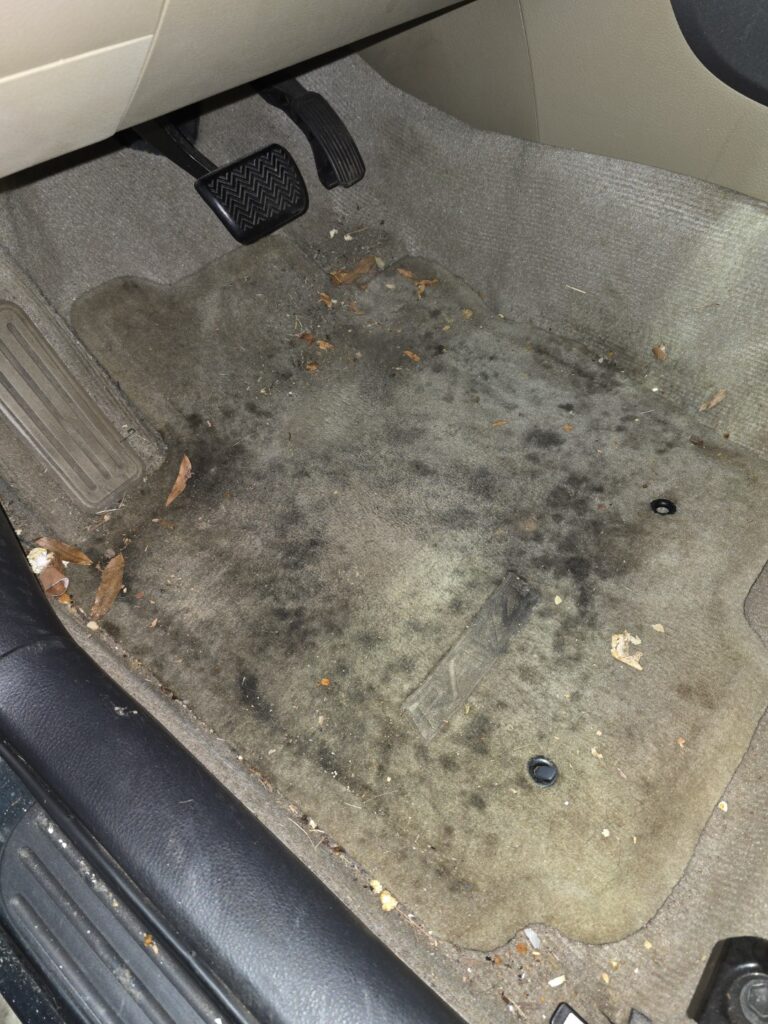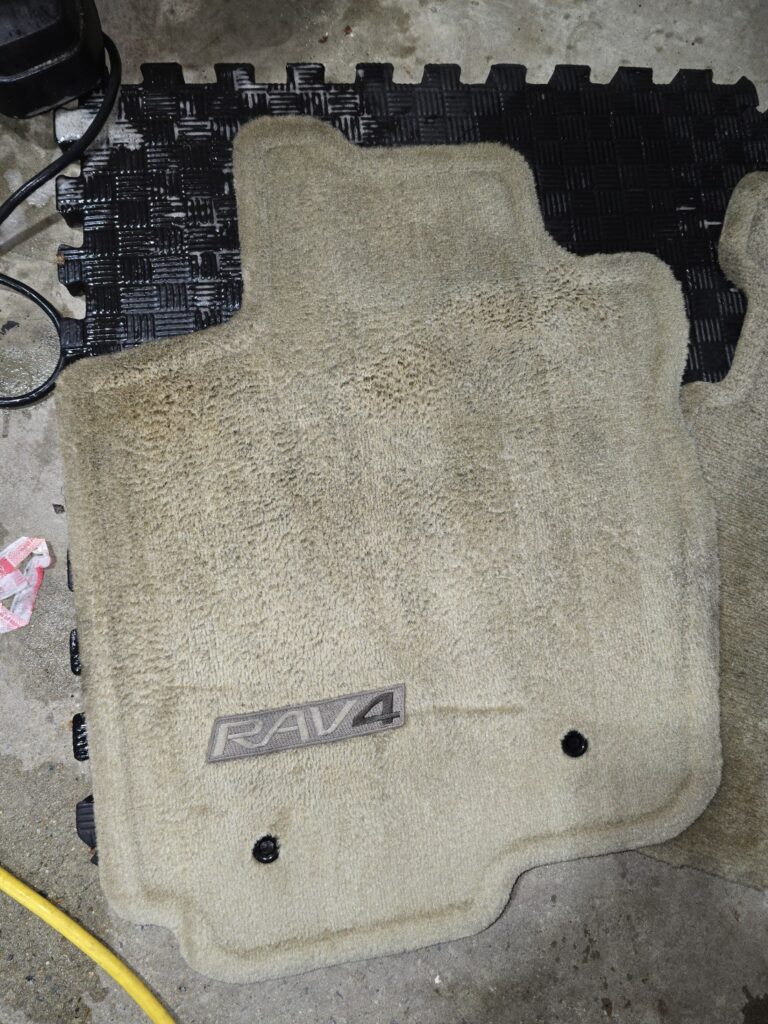A fresh detail job on your vehicle can be an incredibly satisfying experience. One moment, your car looks dull and coated in layers of grime, and the next, it’s transformed into a showroom-worthy machine that sparkles in the sun. But getting a top-tier detail isn’t the final step—knowing how to care for your newly detailed car is just as important. If you’ve ever wondered how to maintain that fresh shine, we’ll dive into the biggest pitfalls you should avoid. By the time you’re done reading, you’ll have practical tips you can use right away to keep your car looking like it just rolled out of a professional detail shop.


Understanding the Importance of Post-Detailing Care
Once your car has been detailed, the clock starts ticking on how long that glossy finish and super-clean interior will last. Think of it like getting a brand-new pair of shoes; if you never wipe them down or protect them from dirt, they won’t stay shiny for long.
Preserving the Shine and Gloss

Your vehicle’s new sheen is beautiful, but it’s also vulnerable. Dust, road salt, and even bird droppings can quickly dull that surface if you don’t take care. Preserving the shine is more than just for vanity—it’s also important for maintaining your car’s paint, which protects the body from rust and corrosion.
Extending the Lifespan of the Detailing Job


When done right, a professional detailing job can last for weeks or even months. But this is only possible if you commit to simple maintenance habits. Proper washing techniques, protecting surfaces from UV rays, and using the correct cleaning products can make all the difference.
Mistake #1 – Neglecting Your Post-Detail Wash Routine
A shiny car can make you feel like you’re on top of the world, but that feeling can fade quickly if you fail to maintain your investment.
Using Harsh Detergents
After a detail, some drivers go right back to using dish soap or general household cleaners on their car’s paint. This is a recipe for disaster. Harsh detergents strip away waxes, sealants, and ceramic coatings, leaving your paint naked and exposed. Instead, opt for a pH-balanced car wash solution specifically designed for automotive finishes.
Overlooking Gentle Washing Techniques
Pressure washers set at full blast or using a dirty sponge can create swirl marks and microscratches. Ideally, use the two-bucket method: one bucket with soapy water and one with clean water to rinse your mitt. This helps keep dirt particles from being reintroduced onto the paint.
Mistake #2 – Skipping the Proper Drying Process
Once the washing is done, many people simply let nature run its course and air-dry the car. But water droplets can act like tiny magnifying glasses under the sun, leading to water spots on the surface.
Why Air-Drying Can Be Risky
Air-drying may seem harmless, but dust and pollen floating in the air can land on those wet surfaces and form streaks or leave behind residue. To keep your paint pristine, invest in high-quality drying towels or microfiber cloths designed for automotive use.
Towels vs. Microfiber Cloths
Traditional towels can be abrasive if they aren’t soft enough or if they contain polyester fibers that scratch. Microfiber cloths, on the other hand, are engineered to trap particles safely within their fibers, preventing them from being dragged across your paint.
Mistake #3 – Ignoring Paint Protection
Think of paint protection as the invisible armor that shields your car from contaminants and oxidation. Without it, even minor environmental hazards can degrade your vehicle’s finish over time.
Wax vs. Sealant vs. Ceramic Coating
These three types of paint protection have their own pros and cons.
- Wax provides a warm, deep gloss but typically lasts only a few weeks.
- Sealant offers a longer lifespan, often up to six months, and creates a slick surface that’s easier to maintain.
- Ceramic coatings provide an even more durable shield, repelling water, dirt, and grime for up to a couple of years if maintained properly.
Frequency of Reapplication
Each product has a different reapplication schedule. Waxes might need refreshing every month or two, whereas sealants can go for half a year. Ceramic coatings can last even longer, though you should still use specialized toppers or detail sprays to keep them in pristine condition.
Mistake #4 – Parking Carelessly
Even the most flawless detail job can be undone by poor parking habits. Where and how you park matters more than you think.
Sun Exposure and UV Damage
Leaving your car under direct sunlight for extended periods can bake contaminants into the paint and cause fading over time. If possible, opt for covered parking or at least find a shaded spot. UV rays aren’t just bad for your skin; they’re also rough on your car’s exterior and interior surfaces.
Avoiding Contaminated Areas
Parking under trees can expose your vehicle to tree sap, bird droppings, and falling twigs. In industrial areas, chemical fallout can land on your paint and start corroding the clear coat. Whenever possible, pick a clean, open area where hazards are minimal.
Mistake #5 – Failing to Maintain the Interior
It’s easy to focus on the exterior shine and forget that your car’s cabin also underwent a detailed makeover. Interior upkeep is crucial for comfort and long-term aesthetics.
Ongoing Vacuuming and Dusting
Even if the detailer cleaned every nook and cranny, dust starts to accumulate the moment you drive away. Make it a routine to quickly vacuum the carpets and wipe down the dashboard once a week. A handy microfiber cloth can be your best friend for removing fingerprints and smudges from surfaces.
Taking Care of Leather and Upholstery
Leather seats need conditioning to prevent cracking and fading. Fabric seats can stain quickly if spills aren’t treated promptly. Keep a small upholstery stain remover in the car for emergencies. Much like your own skin, these materials need nourishment and protection to stay looking new.
Mistake #6 – Using Low-Quality Cleaning Products
You might be tempted to grab the cheapest solutions off the shelf, but this can cause more harm than good. Quality matters in automotive care products.
Why pH-Balanced Products Matter
An overly acidic or alkaline cleaner can eat away at the paint’s protective layers. pH-balanced products are formulated to be gentle yet effective, making sure they clean without degrading waxes or sealants.
Spot-Testing Before Committing
Always test a new product in an inconspicuous spot, like under the bumper or a small interior patch. This ensures that if the product reacts adversely, it won’t ruin a highly visible area of your car.
Mistake #7 – Overlooking Wheel and Tire Maintenance
Freshly detailed wheels can make your car look extra sharp, but they also attract brake dust and road grime like magnets.
Proper Tire Shine Application
Not all tire shines are created equal. Some products leave a greasy finish that flings onto your paint when you drive. Look for water-based formulas that soak into the rubber, giving a clean, satin finish without the messy residue.
Wheel Seals and Protective Coatings
Many detailers will apply wheel sealant during a full detail, but reapplying periodically keeps brake dust from sticking and reduces the need for aggressive scrubbing. Some ceramic coatings are also made specifically for wheels, adding an extra layer of protection against heat and grime.
Mistake #8 – Relying on Automated Car Washes Immediately
You just spent good money on a professional detail. Why risk messing it up by driving through an automated car wash?
Risks of Brush-Based Car Washes
Some automatic car washes use stiff brushes that can create swirl marks or even scratches in your freshly detailed paint. Their soaps may also be overly harsh, stripping away any protective layer your detailer applied.
Gentle Alternatives for Freshly Detailed Cars
If you’re too busy to hand-wash, look for a brushless car wash that uses only high-pressure water and non-abrasive chemicals. Touchless washes are generally safer, though they might not offer the same level of cleanliness as a careful hand wash.
Mistake #9 – Not Checking Under the Hood
A car detail sometimes includes an engine bay cleaning, but even if it doesn’t, it’s good practice to keep an eye under there.
Keeping Engine Components Clean
Debris like leaves or oil residue can accumulate over time, causing unpleasant odors or even mechanical issues. If your engine bay was detailed, maintain it by wiping down plastic covers and using a mild degreaser occasionally.
Identifying Possible Post-Detail Water Leaks
Engine detailing involves water, so make sure everything is sealed properly. Check for moisture around spark plugs, electrical connectors, and battery terminals. If you spot any lingering wetness, dry it out quickly to prevent corrosion or electrical malfunctions.
Mistake #10 – Neglecting Regular Quick Touch-Ups
Your car doesn’t have to get dirty enough to host a mud-wrestling match before you clean it again. Quick touch-ups can go a long way in maintaining that detailed look.
Handy Kits to Keep in the Trunk
Having a small cleaning kit in your trunk is a game-changer. Stock it with:
- A spray detailer or waterless wash
- Microfiber towels
- A tire shine applicator
- Glass cleaner
This setup ensures that unexpected bird droppings or coffee spills can be dealt with immediately, rather than letting them sit and cause damage.
The 5-Minute Wipe-Down Strategy
If you’re pressed for time, commit to a simple 5-minute wipe-down. Spray detailer on problem spots like bug splatters, random smudges, or minor dirt. Wipe with a fresh microfiber, and you’re good to go. Consistency is the key. Doing short sessions every few days can help you avoid massive cleanups later.
Common Misconceptions About Post-Detailing
There’s a lot of misinformation out there. Let’s clear up a few misunderstandings to help you make informed choices.
“One Detail Is Enough for the Entire Year”
Some people believe that detailing their car once a year is sufficient, but that’s like saying you only need to see a dentist once in your lifetime. The environment is filled with pollutants, debris, and harmful UV rays—your car needs consistent care to remain in tip-top shape.
“Only High-End Cars Need Post-Detail Care”
Whether you drive a sporty convertible or a practical sedan, maintaining a clean and protected exterior and interior is crucial. Rust and fading paint don’t discriminate based on the brand or model; they can happen to any car that’s neglected.
Tips for Long-Term Maintenance
Now that you know what not to do, let’s focus on what you should do to keep your car shining for as long as possible.
Scheduling Routine Professional Details
Even with the best at-home care, your car will benefit from periodic professional detailing. Think of it like a dental check-up for your vehicle—professionals can reach spots you might overlook and apply advanced techniques that preserve your car’s condition.
Building a Weekly Cleaning Habit
It doesn’t have to be an intensive scrub every week, but a consistent basic cleaning routine can tackle minor dirt before it becomes a bigger issue. A weekly rinse, vacuum, and quick interior wipe-down can keep your car feeling (and smelling) fresh.
Smart Storage Solutions
If you have a garage, use it. Sheltering your car from the elements can extend the life of your exterior detailing by months. If a garage isn’t available, consider investing in a high-quality car cover for extra protection. Just make sure the cover is clean and soft on the inside so it doesn’t scratch the paint.
Conclusion
When you drive off from the detailing shop, your car looks brand-new—but that moment doesn’t last forever without a bit of TLC. Avoiding common mistakes like using harsh chemicals, air-drying your car, or parking in poor locations can make your detail last. And don’t forget about interior care, quality cleaning products, and the essential paint protection that keeps your ride glowing on every journey. By focusing on consistent, gentle maintenance, you’ll preserve not only the immediate shine but also the long-term health and value of your vehicle.
FAQs
- How soon can I wash my car after it’s been detailed?
It’s often recommended to wait at least a week, especially if you’ve had a fresh wax or sealant applied. This allows the protective layers to fully cure. However, gentle rinsing or spot cleaning for bird droppings or bug splatters is usually fine. - Is it safe to use a pressure washer at home?
Yes, as long as you use it correctly. Keep the pressure setting moderate and maintain a safe distance from the paint. Also, avoid spraying directly into vents or electrical components. - What’s the best way to protect my car’s paint long-term?
The ideal method depends on your budget and commitment level. If you’re willing to reapply regularly, wax and sealants work great. For a more durable solution, ceramic coatings offer extended protection but usually cost more upfront. - Can I park my freshly detailed car under a tree for shade?
While shade is better than direct sunlight, trees often drop sap, pollen, and play host to birds whose droppings can damage your paint. If you must park under a tree, do quick spot checks and clean up any contaminants as soon as possible. - Do I need to re-detail the interior as often as the exterior?
Not necessarily. Basic interior maintenance like vacuuming, dusting, and wiping surfaces goes a long way. A full interior detail is usually needed only a few times a year unless you have spills or stains that require professional attention.
